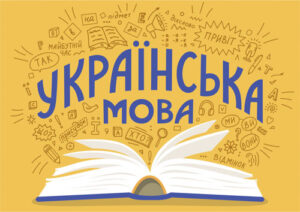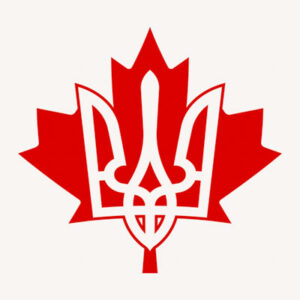Written by Rebecca Schmor
The Past
The Ukrainian language has a long history in Canada’s education system. At the beginning of the 20th century, there were already some 400 Ukrainian language schools in Alberta, Saskatchewan, and Manitoba. These schools helped Ukrainian settler communities maintain their language and culture, supported by provincial bilingual schooling legislation allowing schools to offer instruction in languages other than English.

The onset of World War I heightened efforts to assimilate immigrants into an English-speaking Prairies. Provinces rewrote legislation to make English the only language of instruction in schools. This meant that Ukrainians were often not permitted to speak any Ukrainian at school. As well, many workers faced discrimination for using their language in the workplace.
With the introduction of the Official Languages Act in 1969, provinces changed their education acts to once again allow languages other than English to be used in instruction. This led to the (re)establishment of provincial Ukrainian education programs by 1980, including preschools (Sadochok), summer camps, heritage language programs (Ridna Shkola), and adult language classes.
The Present
Today, the Ukrainian language continues to be taught through a variety of education programs in Canada, supported by associations such as the National Ukrainian Education Council of the Ukrainian Canadian Congress, the Ukrainian Canadian School Branch in Toronto, and the Ukrainian National Federation of Canada, whose programs reach from Sudbury to Windsor and Regina to Montreal.

These programs also serve as a bridge between the Ukrainian-Canadian community and newly arrived refugees from Ukraine. Ukrainian bilingual schools, once threatened by assimilationist policies during World War I, are now in a unique position to welcome and support children and families fleeing Russia’s war in Ukraine.
The Future
The resilience of the Ukrainian language in Canada’s education system is a testament to community efforts to maintain their linguistic heritage, a key part of cultural identity. With Canada’s policy of multiculturalism — which operates under official bilingualism, privileging English and French — it will remain important for educational communities to support heritage languages like Ukrainian.
These efforts can be amplified by teachers of any language, who can incorporate into their curriculum the importance of supporting heritage languages, resisting language loss, and expressing cultural identity through language. Ideas and resources for such activities can be found in each post in CASLT’s Discovering Languages series, including the resource for Ukrainian below.
Welcoming a Ukrainian-Speaking Classmate
Description
This activity is designed for elementary or middle school learners of any language but can be adapted for use with other levels and specific target languages. In this activity, students are asked to prepare to welcome a Ukrainian-speaking classmate by creating a welcome poster and learning some useful phrases in Ukrainian. They are also invited to share phrases they know in other languages they may speak at home or study at school or on their own.
This activity is inspired by the “Wanna be my buddy?” scenario. This resource, developed by Dr. Enrica Piccardo and her research team at the University of Toronto, is available on a platform called LITE, funded by the Social Sciences and Humanities Research Council of Canada. To adapt this activity for older groups, students could be asked to create a welcome email or text instead of a poster. To adapt this activity for specific target languages, the steps and materials can be translated.
Steps
1. Creating a multilingual welcome poster (2–3 classes)
First, tell students to imagine that a new classmate from Ukraine will be joining their class. To help prepare to welcome this classmate, ask students to create a welcome poster with phrases in Ukrainian, as well as the target language and any other languages they know. To do so, they must learn words and phrases in Ukrainian. Students can look online or the teacher can provide resources such as this vocabulary list.
2. Analyzing cognates (1 class)
As, or before, students look up the phrases in Ukrainian, introduce the concept of cognates by asking students to watch this video of Ukrainian-English cognates. Next, have students analyze any cognates found in their poster and discuss what cognates they can recognize in other languages (e.g., “different” in English, “différent” in French, and “diferente” in Spanish).
3. Analyzing false cognates (1 class)
After step 2, connect the concept of cognates to the notion of false cognates or “false friends.” Ask students to read this text listing false friends between English and Ukrainian. Invite learners to share false cognates from other languages they know and discusses how being aware of these words when learning a language can help avoid misunderstandings and improve communication.
Commentary
Preparing to welcome a new classmate from another country or culture encourages students to act as cultural ambassadors, developing their intercultural mediation skills. It can also help them reflect on their own cultural norms and empathize with the experiences of newcomers.
Analyzing lexical cognates in different languages helps students raise their metalinguistic awareness, or knowledge of how languages work. It also improves intercomprehension — the ability to understand parts of an unfamiliar language by drawing on knowledge of a familiar language. Focusing on linguistic similarities can validate learners’ existing language knowledge, as well as lead to more openness and willingness to understand other languages, cultures, and people.
Further Reading
Doyé, P. (2005). Intercomprehension guide for the development of language education policies in Europe: From linguistic diversity to plurilingual education. Council of Europe. https://rm.coe.int/intercomprehension/1680874594
Otwinowska, A., & Szewczyk, J. M. (2019). The more similar the better? Factors in learning cognates, false cognates and non-cognate words. International Journal of Bilingual Education and Bilingualism, 22(8), 974–991. https://doi.org/10.1080/13670050.2017.1325834
Skwarok, J. (1958). The Ukrainian settlers in Canada and their schools: With reference to government, French Canadian, and Ukrainian missionary influences, 1891–1921. Internet Archive. https://archive.org/details/ukrainiansettler00skwa/page/n9/mode/2up
Sterzuk, A. (2022). Ukrainian language schools in Western Canada were shaped by shifting settler colonial policies. The Conversation. https://theconversation.com/ukrainian-language-schools-in-western-canada-were-shaped-by-shifting-settler-colonial-policies-179710
Wong, J. (2022). As Ukrainian students arrive in Canada, experts urge schools to be welcoming, culturally informed. CBC News. https://www.cbc.ca/news/canada/students-ukraine-refugee-settlement-1.6410177




